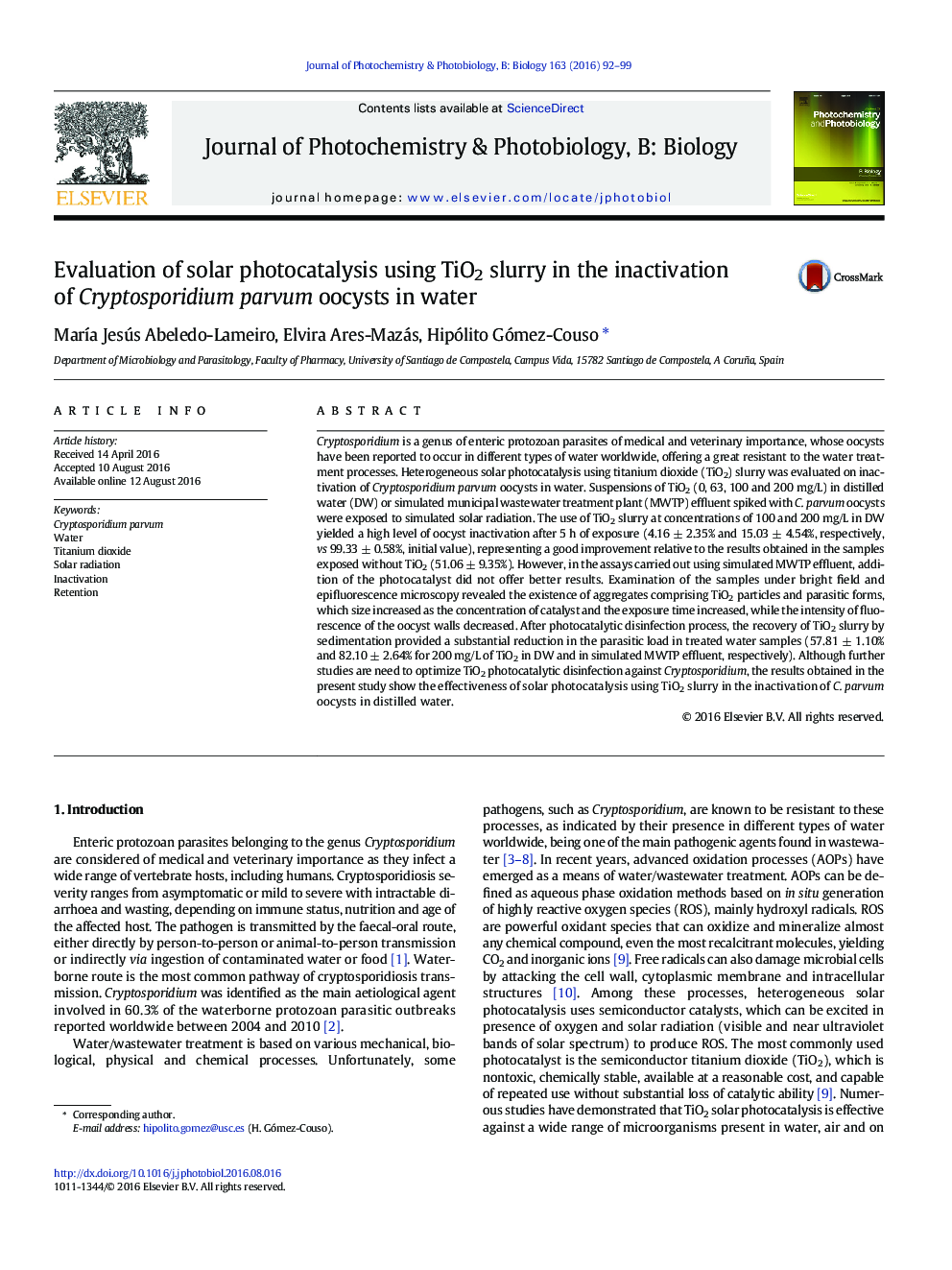| Article ID | Journal | Published Year | Pages | File Type |
|---|---|---|---|---|
| 4754650 | Journal of Photochemistry and Photobiology B: Biology | 2016 | 8 Pages |
â¢Aggregates of TiO2 particles and oocysts enhance the photocatalytic disinfection.â¢Aggregation between TiO2 particles and oocysts is influenced by pH of water samples.â¢TiO2 slurry reduces the parasitic load in the treated water samples.â¢First study evaluating TiO2 photocatalysis on Cryptosporidium in simulated effluent
Cryptosporidium is a genus of enteric protozoan parasites of medical and veterinary importance, whose oocysts have been reported to occur in different types of water worldwide, offering a great resistant to the water treatment processes. Heterogeneous solar photocatalysis using titanium dioxide (TiO2) slurry was evaluated on inactivation of Cryptosporidium parvum oocysts in water. Suspensions of TiO2 (0, 63, 100 and 200 mg/L) in distilled water (DW) or simulated municipal wastewater treatment plant (MWTP) effluent spiked with C. parvum oocysts were exposed to simulated solar radiation. The use of TiO2 slurry at concentrations of 100 and 200 mg/L in DW yielded a high level of oocyst inactivation after 5 h of exposure (4.16 ± 2.35% and 15.03 ± 4.54%, respectively, vs 99.33 ± 0.58%, initial value), representing a good improvement relative to the results obtained in the samples exposed without TiO2 (51.06 ± 9.35%). However, in the assays carried out using simulated MWTP effluent, addition of the photocatalyst did not offer better results. Examination of the samples under bright field and epifluorescence microscopy revealed the existence of aggregates comprising TiO2 particles and parasitic forms, which size increased as the concentration of catalyst and the exposure time increased, while the intensity of fluorescence of the oocyst walls decreased. After photocatalytic disinfection process, the recovery of TiO2 slurry by sedimentation provided a substantial reduction in the parasitic load in treated water samples (57.81 ± 1.10% and 82.10 ± 2.64% for 200 mg/L of TiO2 in DW and in simulated MWTP effluent, respectively). Although further studies are need to optimize TiO2 photocatalytic disinfection against Cryptosporidium, the results obtained in the present study show the effectiveness of solar photocatalysis using TiO2 slurry in the inactivation of C. parvum oocysts in distilled water.
Graphical abstractDownload full-size image
